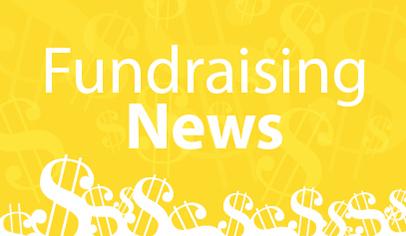Two of the most lucrative big business fundraising opportunities for schools have gone away (or announced an upcoming exit) in recent months. First it was Safeway exiting the eScrip program. And this week it's the even bigger news that Target is ending its nearly 20-year-old Take Charge of Education program. Safeway, through eScrip, was writing big checks to schools based on parent grocery shopping. And Target has been sending checks to schools based on the Redcard purchases made by registered Target credit and debit card users.
In both cases, because the retailers are so popular and parent purchase frequency is so high, schools could easily make hundreds and even thousands of dollars per year from the programs. Schools have been getting a percentage of entire shopping trips rather than, as happens with product-based programs like Box Tops for Education or Labels for Education, a percentage of a single box of cereal or can of soup.
And now both are gone or on their way to the history books. What happened?
I can definitely tell you that big businesses can change plans on a dime. New marketing leadership. New priorities. New budget constraints. These can all signal the end of legacy programs at any business.
But I suspect the Safeway and Target challenges are more fundamental—the programs were literally too easy for schools and parents. Writing big checks wasn’t the problem; writing big checks when customers weren’t actively making shopping decisions or being reminded of the retailers’ good deeds was the problem.
The Minneapolis Star-Tribune included one key detail in its story that tells this part of the tale:
“When the company surveyed shoppers, it found that many did not remember if they had designated a school.”
I’d wager that statistic alone spelled the end of Take Charge.
Think about the difference between the Target program and Box Tops. For Box Tops, kids remind parents at the store (the “sleeve-tugging” factor), the reward is paid after a parent buys the product, someone clips the label, someone sends it to school, and a school volunteer bundles the Box Tops and send to General Mills. There’s very clear intention there and multiple touch points and reminders that benefit General Mills.
With the Target card, a shopper could register to benefit a school one time and then never do anything else. The school itself didn’t have to do anything at all except cash the check. When the program first began, every school donation came from a shopper who in the very recent past had taken a specific action to benefit a school. But as time has passed, a higher and higher percentage of donations have been driven by shoppers who don’t even know they are giving. They took an action one time but it may have been decades ago; odds are they no longer have children at the school they are technically supporting, and they certainly don’t have the same kind of warm connection with that school that they did when their kids were roaming the school’s halls.
It’s equally tricky for a grocer. With parents spending literally hundreds of dollars per week, the fundraising earnings automatic, and the profit margins for grocers already very, very thin, Safeway needed very clear proof that shoppers were favoring Safeway because of the fundraising program. The easier this program got for shoppers, the bigger Safeway’s checks became—but the harder it was for Safeway to justify the spend. Too easy isn’t always good.
I’m certainly thankful for the millions Safeway and Target have given to schools. Good corporate citizens deserve our praise. These were no fly-by-night efforts, rolled out with huge fanfare and dropped months later. Decades and hundreds of millions of dollars are very significant.
That said, we are looking forward to helping the next big-budgeted school supporter put together a school program with even more legs. With the right structure and support and incentives, schools can be unbelievably effective conduits both for activating smart programs for cause-minded corporations and for receiving and using well the proceeds of these types of programs.
When everyone wins, everyone wins for a long time. But when the program is too one-sided (schools are winning a ton but the sponsor benefits are dwindling), that program just can’t last. That’s sadly what happened with both Safeway and Target.




















